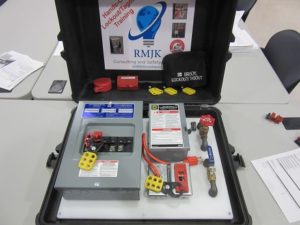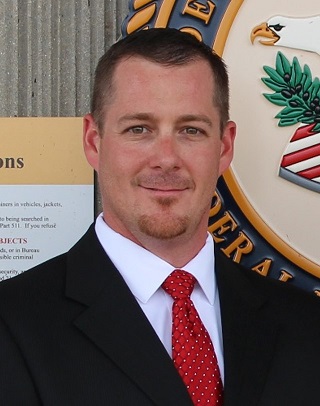Developing an effective training program is a challenge that affects most safety professionals. A proper balance of time constraints, production schedules, multiple shifts, and individual learning styles drives the effectiveness of any training program. As safety professionals, we must develop training that provides relevant and pertinent information while addressing all the aforementioned challenges.
There are multiple theories, opinions, and books written about learning styles—the following is just a synopsis of the four most common learning styles.
- Aural learners retain information well through lectures and tend to remember and repeat ideas that are verbally presented.
- Reading/writing learners obtain concepts best through verbalization and enjoy question and answer sessions.
- Kinesthetic learners absorb knowledge by doing or other direct involvement and are not very attentive to visual or auditory presentations.
- Visual learners master new skills by seeing and by watching demonstrations, and they prefer visual arts and media.
In addition to learning styles, there are various learning principles to consider. I have settled on these five to consider when developing and delivering safety training.
- Learn by Doing Principle. Experience is the best teacher. The best way to learn something is by actually doing it.
- Learn When You Are Ready Principle. The best time to learn is when you feel ready and motivated. If you are not motivated, chances are you’ll work half-heartedly.
- Learn What Is Relevant Principle. It is easier to learn content that is meaningful and relevant than something that is irrelevant.
- Learn by Association Principle. It is easier to start with something you know before proceeding to new tasks.
- Learn by Reinforcing Principle. Repetition helps in retaining and recalling what you’ve learned. Repetition also reinforces newly learned skills.
In an effort to align with these principles and present an effective training program, I believe the following 3-point training approach should be used to model your training topics:
| 1: FORMAL INSTRUCTION | + | 2: PRACTICAL TRAINING | + | 3: EVALUATION |
| (e.g., lecture, discussion, interactive computer learning, video, and/or written material) | (demonstrations performed by the trainer and practical exercises performed by the trainee) | (written and performance-based tests) |
Depending on trainees’ time and shift availability, all phases can be accomplished, and they will provide quality learning experiences with limited interruptions. The 3-point training approach appeals to all learning styles and supports a traditional or blended learning strategy. For example, here’s a scenario that illustrates an effective lockout/tagout (LOTO) 3-point training approach.
1. Formal Instruction Phase
First, decide if you want to take a traditional classroom, self-study, or computer-based approach. Remember that classroom training is more rigid and does not support much flexibility—however, it does allow for more participant interaction and dialogue as everyone is together in one place at the same time.
I prefer utilizing interactive PowerPoint® presentations, computer-based resources, or video books. There are several good resources available to help accomplish this, including BLR® subscription services or JJ Keller video books. This approach allows formal instruction to be completed during any shift; at a time most convenient for the trainee, trainer, and management; and on an individual or small group basis.

2. Practical Training Phase
The second ingredient to the 3-point training approach is providing practical hands-on training. Individuals retain 5% of what they hear, 20% of what they see when presented in a 1-dimensional format, 30% by demonstration, and 75% by hands-on experience. Incorporating practical training will help instill the overall learning objectives and competencies in the training participants.
Practical training affords the trainer the opportunity to demonstrate the various LOTO components and their application as well as to answer or clarify any questions that arose from the formal instruction phase. The use of a hands-on training device, as shown here, is highly recommended so that real-world situations can be demonstrated in a controlled environment. Furthermore, using a training device instead of actual facility equipment will limit shutdown costs.
3. Evaluation Phase
Completing the 3-point training approach is the evaluation phase. As with any good product, service, or training, some type of survey or evaluation must be completed. An evaluation of the overall training program will help the trainer identify deficiencies within the formal and practical training phases along with quantifying individual competencies, thereby solidifying your training efforts.
This phase allows trainees to recall the knowledge gained from the formal instruction by completing a written test. It is also important to incorporate a performance-based assessment. A performance-based assessment affords trainees an opportunity to identify, isolate, and apply LOTO energy control procedures on simulated energized components.
Referencing the LOTO training device above, I verify through observation that the trainee has the knowledge and skills to successfully apply, use, and remove energy isolating controls on an electrical disconnect, single pole and double pole breaker, power cord, gate valve, and ball valve. This device also allows the trainer to formulate practical energy control procedures for the trainee to follow and implement.
Energize Your Trainees and Yourself
In closing, stop worrying about how to improve your current safety training program and deploy the 3-point training approach today. Start with a sheet of paper titled with the training course you are developing. Next, separate the sheet into columns, addressing one of the three phases. Brainstorm under each column with objectives and solutions, and then implement your plan. Once you combine quality formal instruction, plus meaningful practical training, plus a realistic evaluation, you will find participants to be more engaged and willing to learn. Best of all, you will find yourself more engaged and reenergized, knowing you have developed and delivered an efficient, quality-focused training solution.
 J.D. Horst, CSP, CFI-I, COHC, is an environmental & safety compliance administrator for the Federal Bureau of Prisons at the Administrative United States Penitentiary (AUSP), Thomson, Illinois. Find him on LinkedIn at https://www.linkedin.com/in/jd-horst/. J.D. Horst, CSP, CFI-I, COHC, is an environmental & safety compliance administrator for the Federal Bureau of Prisons at the Administrative United States Penitentiary (AUSP), Thomson, Illinois. Find him on LinkedIn at https://www.linkedin.com/in/jd-horst/. |

